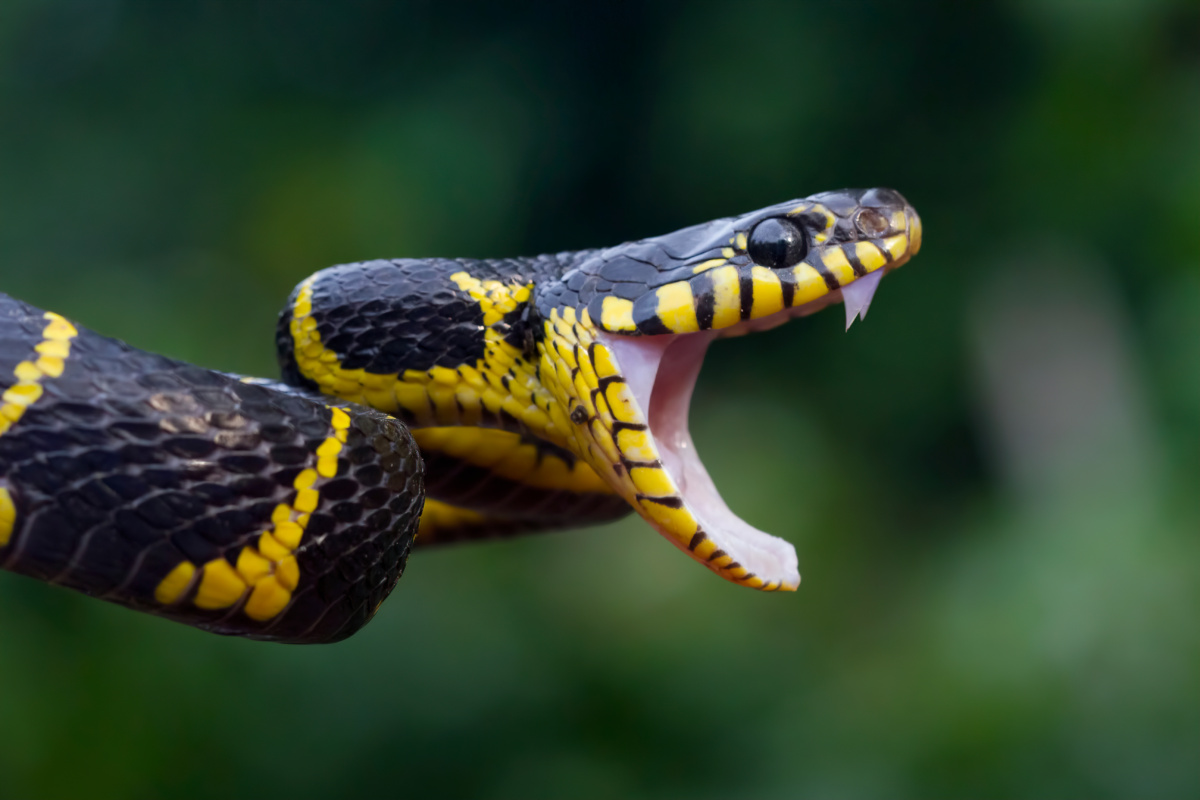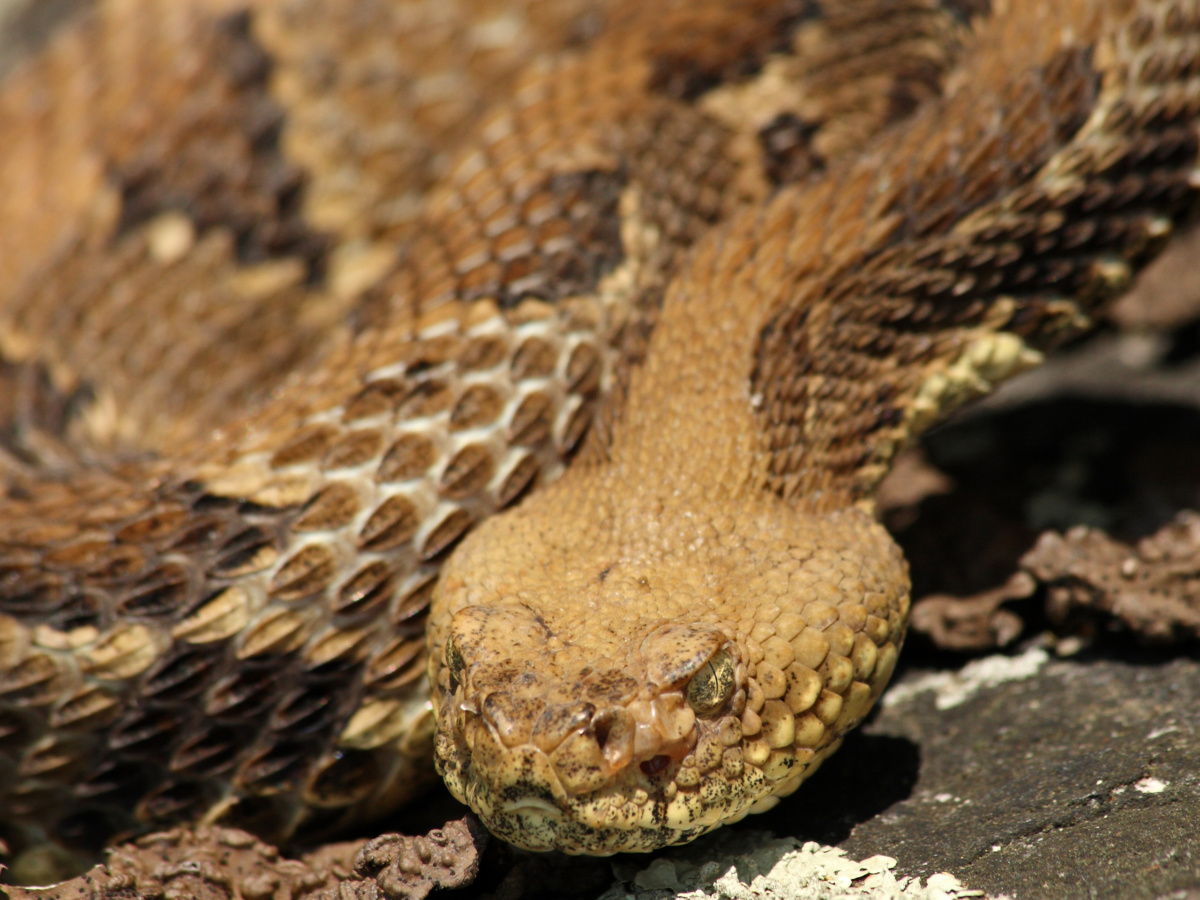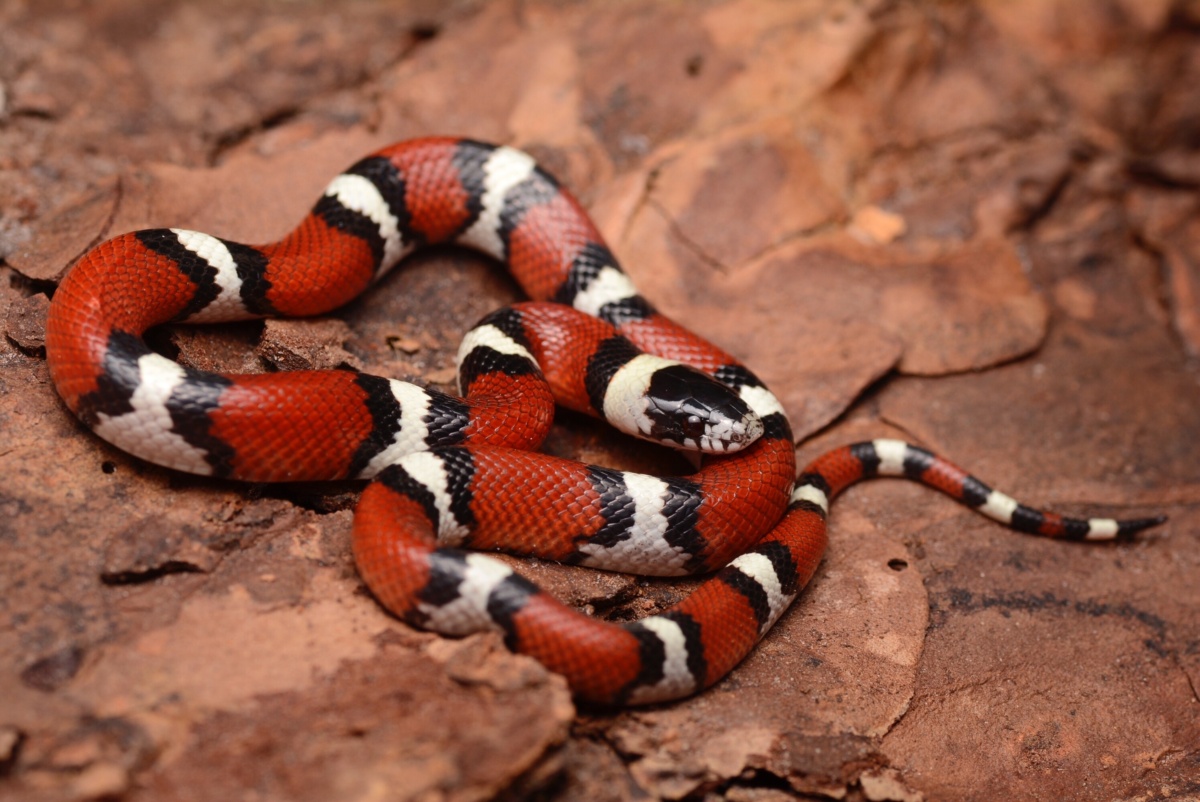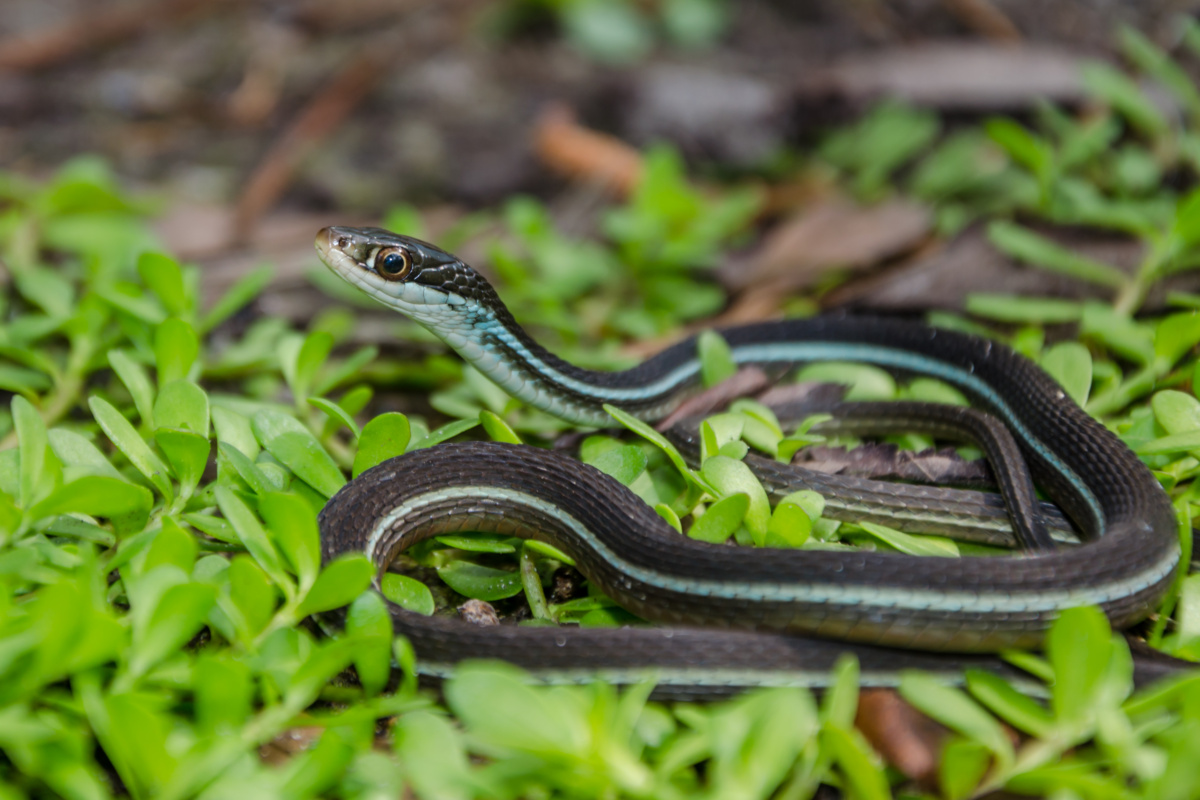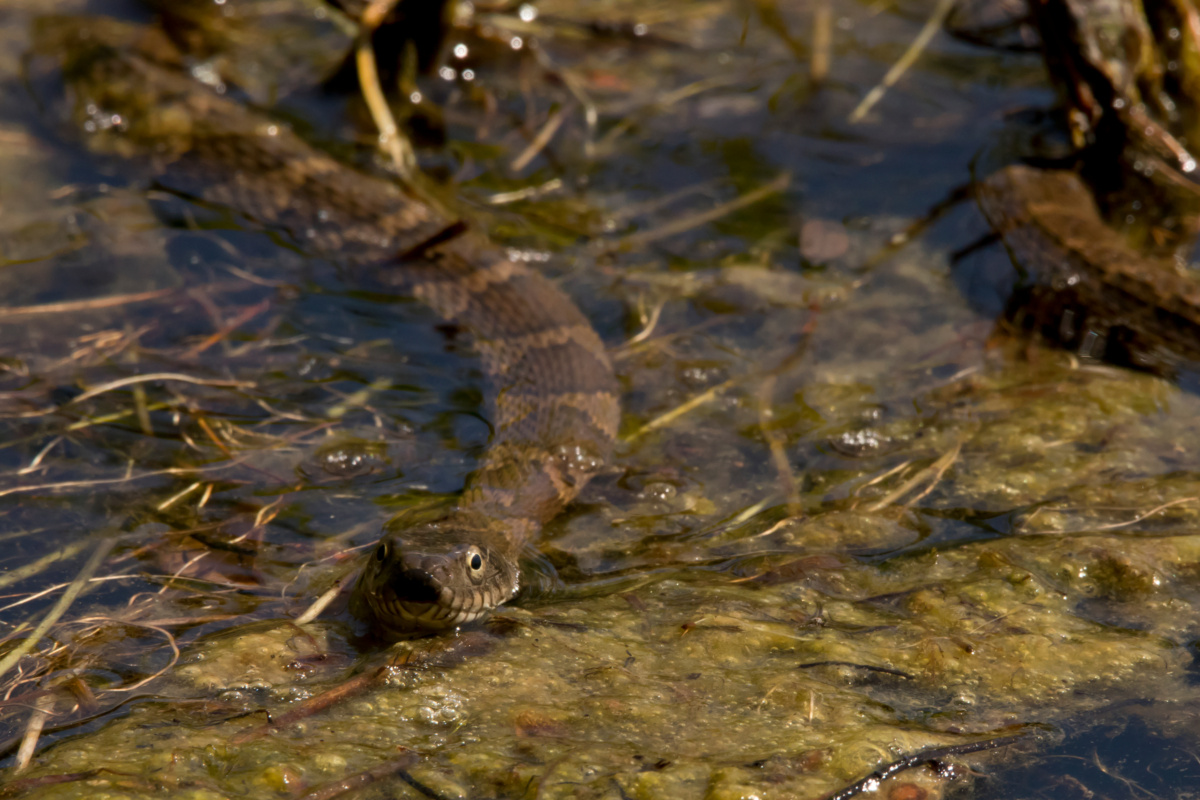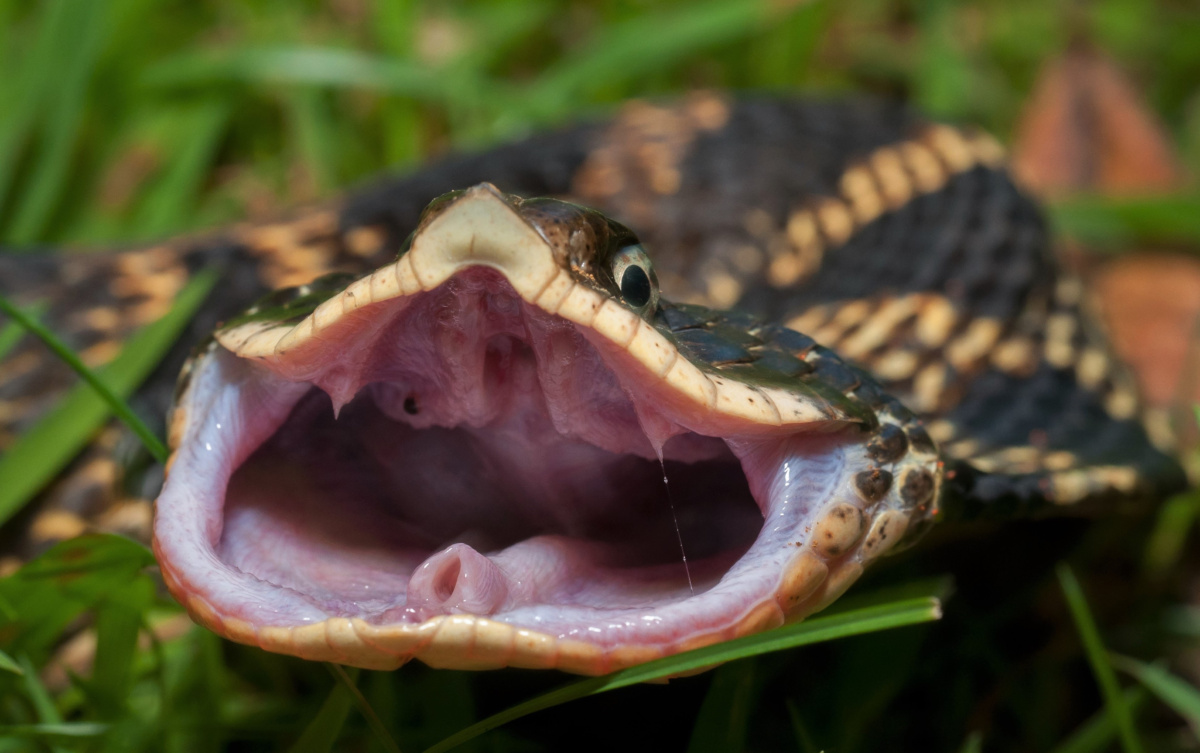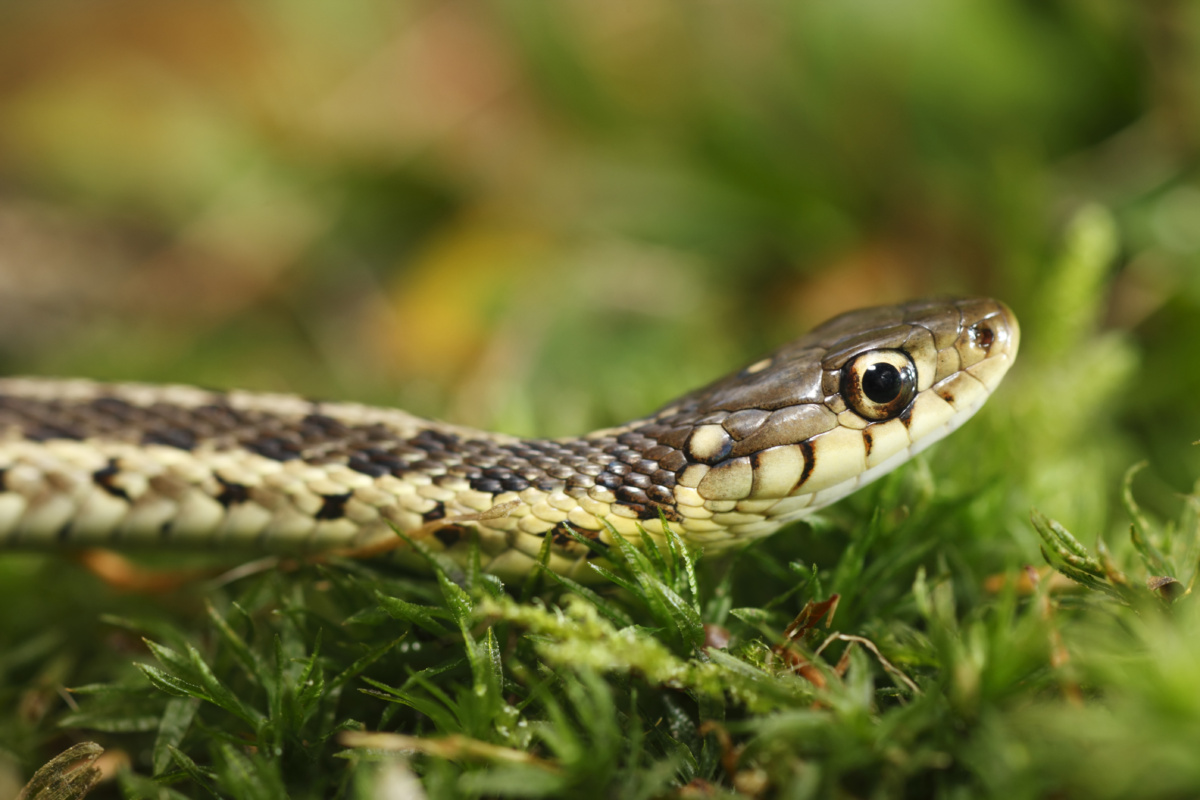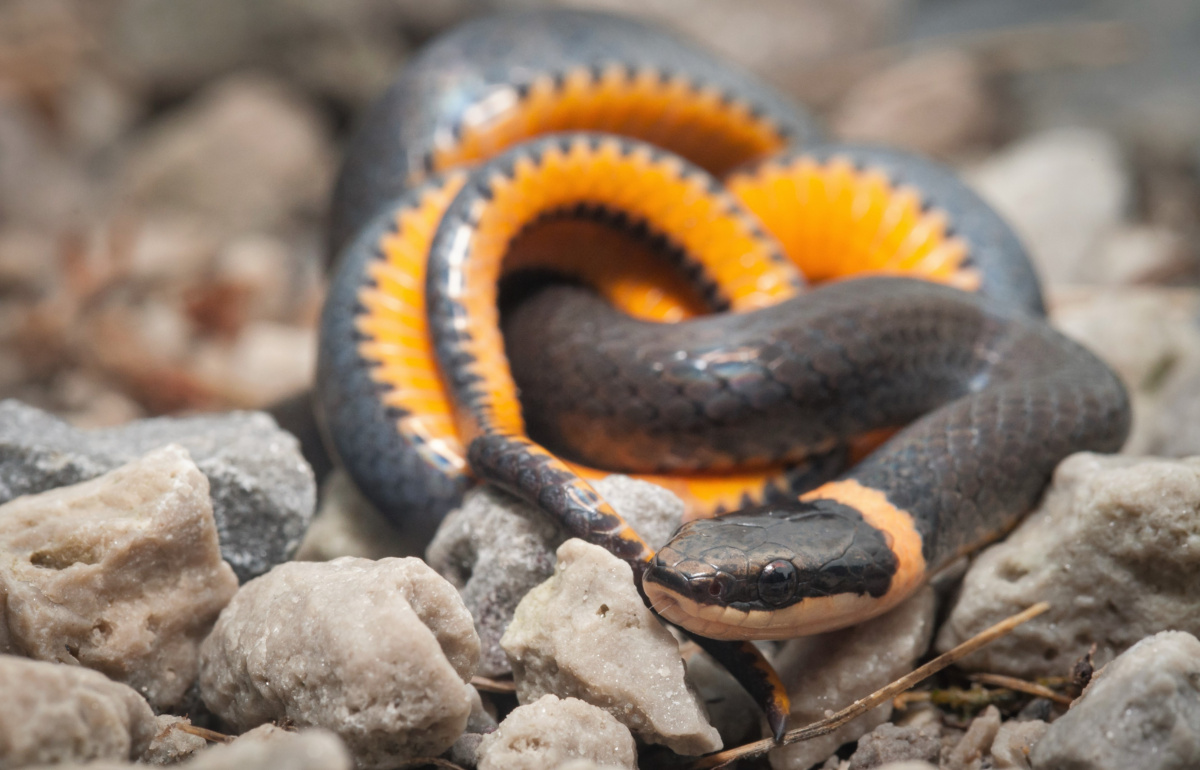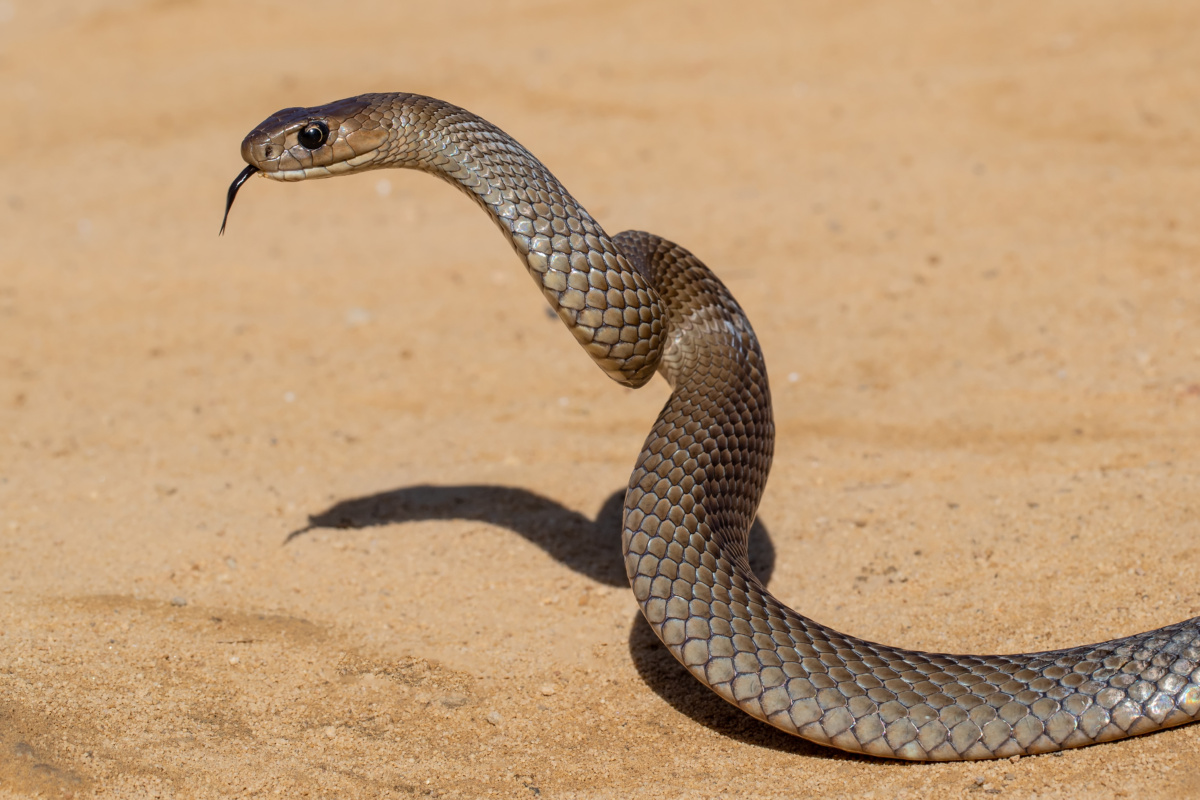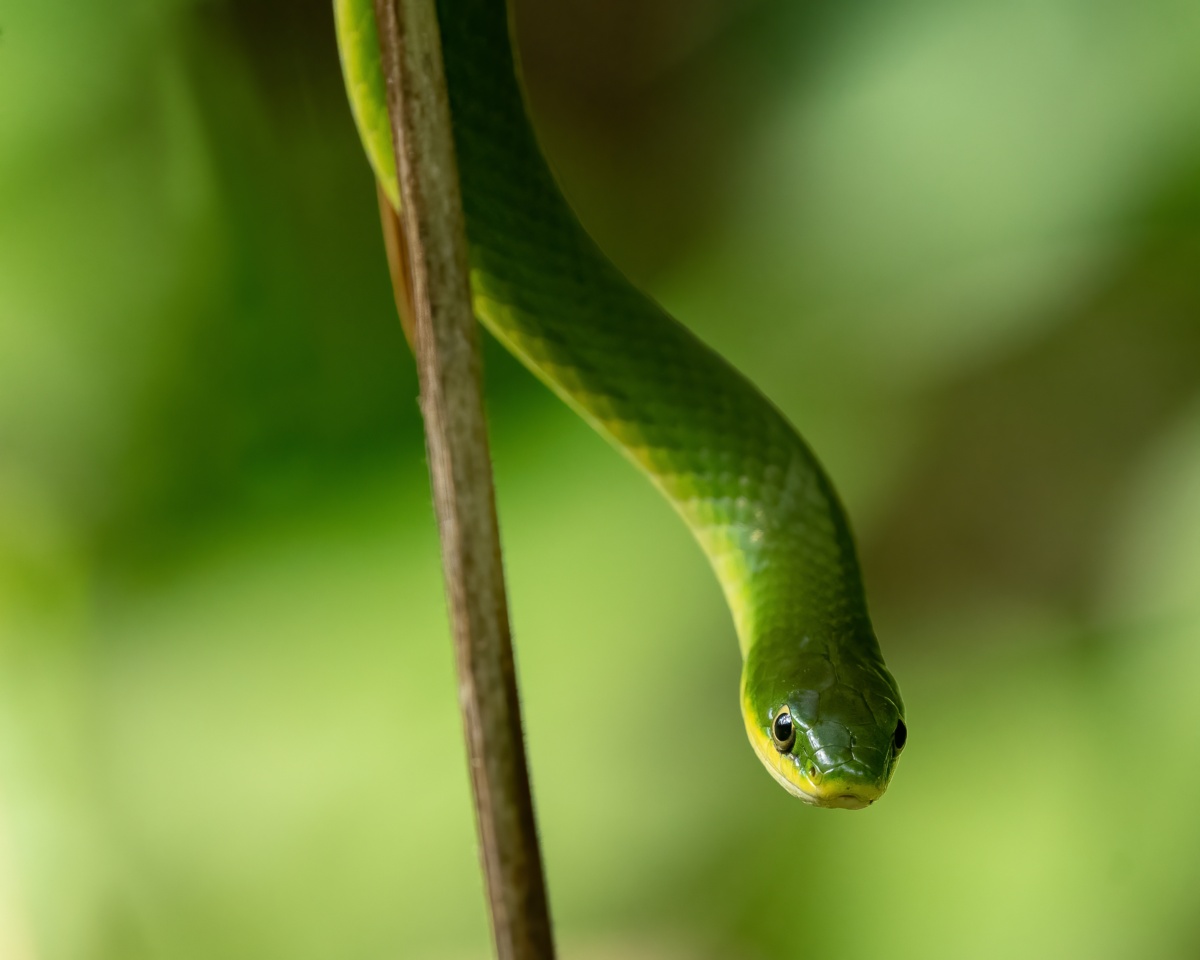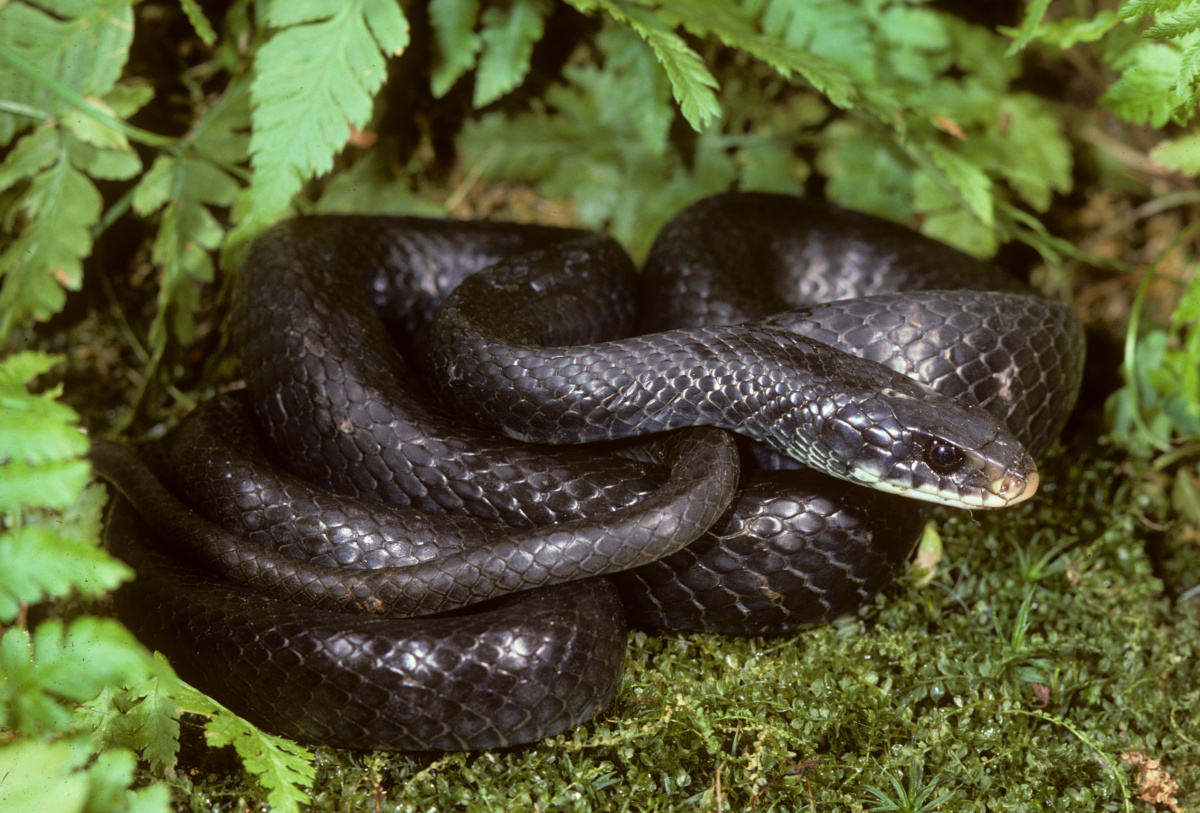If you’re wondering whether there are snakes in New Hampshire, the answer is yes.
If you’re traveling to New Hampshire or if you are a local who’s hoping to explore unknown areas you might want to be prepared to run into our slithery friends.
Now, there are poisonous snakes in New Hampshire but not all of them are that dangerous.
So, let’s get to know exactly how to identify these creatures and their danger level.
1 Timber Rattlesnake
Let’s kick this off by discussing one of the poisonous snakes in New Hampshire.
The Timber Rattlesnake is one of the snakes in New Hampshire that you probably want to avoid.
Although these snakes are important parts of the ecosystem, it’s important to know what to look out for in order to avoid these creatures.
For starters, Timber Rattlesnakes are pitch black and reasonably thick.
When fully grown, they are usually between 30-60 inches in size but they could be much smaller if they are still growing.
These snakes can also be identified by their large heads that are shaped like a triangle.
Light brown lines cross-cross around their surface but you’re unlikely to see the lines from a distance.
Their body texture is also quite rough. So, if you’re looking at a slippery and smooth snake, it probably isn’t a Timber Rattlesnake.
Lastly, similarly to every other rattlesnake, Timber Rattlesnakes have a rattle at the tip of their tail.
So, if you see one of those, stay as far away as possible! Your life may depend on it.
2 Milk Snake
Phew! This snake isn’t as hardcore as the Timber Rattlesnake. So, you can relax a bit at least.
Milk snakes are one of the least dangerous snakes in New Hampshire, as a matter of fact, these snakes aren’t dangerous at all!
They can be identified through their slender bodies that have big, brown blotches all over.
Their surface color is gray and they have patterns on their stomach that look like a checkerboard.
However, I highly doubt you’ll want to get close enough to rub their belly. Unless, of course, you are a snake lover.
The final tell-tale sign that you are dealing with a Milk Snake is the Y-shaped blotch that you’ll find on their head.
Remember, Milk Snakes are not dangerous at all. So, if you run into one, it’s best not to kill it.
Believe it or not, the fact that so many humans kill this snake out of fear that it might be poisonous is its primary threat at the moment.
Creepy or not, Milk Snakes are still a valuable part of our ecosystem!
Recommended Reading
3 Ribbon Snake
If you thought that snakes can’t be shy you definitely haven’t met all of the snakes in New Hampshire.
You particularly haven’t met the Ribbon Snake who doesn’t like to show its face in public too much.
Since they primarily eat fish and frogs, you can rest assured that your fingers and toes are safe too!
These snakes are extremely slender and considered to be quite vulnerable. They usually grow to be between 16-35 inches long.
If you want to know whether you are dealing with a Ribbon Snake, it’s a good idea to look out for the snake’s yellow-green stripes.
These stripes always come in sets of 3 and they run vertically down the snake’s body.
Their tails are quite long as well if you look closely enough. Ribbon Snakes love water.
So, you’re most likely to find them near watery areas such as rivers and lakes.
Once again Ribbon Snakes are more cute than they are dangerous. So, rather call an expert to remove our shy friend as opposed to killing it.
4 Northern Water Snake
Let’s talk about some snakes whose bark is bigger than their bite. Northern Water Snakes are known to have some serious anger issues.
They are quite likely to attack you if you try to pick them up. The worst part is that they’ll also attack you for absolutely no reason other than being in a bad mood.
Thankfully, despite their aggressive nature, Northern Water Snakes aren’t poisonous at all.
These snakes are full of blotches and dark in color. They aren’t the shortest snakes that you’ll find.
As a matter of fact, they can grow to be between 24-42 inches in size.
They’re reasonably thick and usually have either a brown or a gray base color.
If you want to know whether you’re dealing with a Northern Water Snake, be sure to look out for its red or black blotches on the stomach that are shaped like a half moon.
Don’t worry, this snake really is all bark and no bite!
Recommended Reading
5 Eastern Hognose Snake
Eastern Hognose Snakes are one of the endangered species of snakes in New Hampshire.
The more New Hampshire develops the more the Eastern Hognose Snake’s habitat dissolves which are becoming threatening to its existence.
These snakes also aren’t poisonous despite the fact that being killed by humans is another primary threat to their existence.
So, how do you know if you’ve encountered an Eastern Hognose Snake? For starters, their bodies are quite thick.
They usually grow to be between 20-35 inches in size and they have dark blotches that can either be red, brown, or orange.
Their base color is quite dark at the bottom where the blotches start to fade. Eastern Hognose Snakes thrive in sandy terrains.
If you’re planning on taking a walk in an open field you’re also quite likely to encounter one.
Thankfully, they can’t harm you. So, you can continue walking without fretting about your life.
6 Common Garter Snake
Let’s talk about the “maybe” snake. The reason I call Common Garter Snakes the “maybe” snake is that maybe they can do damage, maybe they can’t.
In general, the venom is rated as mild and unlikely to harm a human.
However, a Common Garter Snake bite can be dangerous to pets and has caused medical reactions in certain individuals.
In general, it’s best to steer clear if you want to play it safe. Common Garter Snakes can be identified by their unique stripes.
They are reasonably small snakes that have 2-3 stripes running vertically down their body.
These stripes may be yellow, brown, or greenish.
Another way to know whether you’re dealing with a Common Garter Snake is to look out for small, black spots between their stripes.
If you don’t want to run into one of these snakes, you’re out of luck since they are commonly found in urban areas and back yards.
Don’t worry too much. Since the snake can’t kill you, you can always ask an expert to move it to a more convenient location.
Violence never solved anything!
Recommended Reading
Are There Sharks in Lake Tahoe?
7 Northern Ringneck Snake
If you see a slender snake that has a golden ring around its neck, chances are that you are dealing with a Northern Ringneck Snake.
These snakes can be quite thin and long. They have a bluish-black surface color that’s quite awe-striking, to be honest.
If you run into one of these snakes in New Hampshire, you shouldn’t worry too much.
They are considered to be slightly venomous. However, their venom is unlikely to harm any humans or animals.
What a relief! Northern Ringneck Snakes are also quite small in size.
They grow to be between 10-15 inches in size which makes them cute if you ask me.
If you get close enough to the snake’s belly and you see that it’s yellow in color, you can rest assured that you’ve run into a Northern Ringneck Snake.
These snakes love to live in moist terrains. They also love to hide under logs and logs.
So, if you don’t want to encounter one, it’s best not to pick up anything a snake might want to hide under!
8 Brown Snake
I guess it is safe to assume that a brown snake is brown in color.
This may be light brown or dark brown, but it didn’t receive its name for no reason.
Unfortunately, this is one of the more poisonous snakes in New Hampshire. So, I wouldn’t recommend keeping one as a pet.
How do you know whether you’ve encountered one of these less favorable snakes? Well, first impressions count.
So, let’s take a look at its basic appearance. For starters, dynamite comes in small packages.
This means that despite its venomous qualities, the brown snake is quite small. It only grows to be between 10-15 inches in length.
They may be light or dark in color which can become a bit complicated when it comes to identifying our slithery friend.
So, if you aren’t sure, be sure to look out for dark spots that run parallel from the head to the tail of the snake.
Brown snakes can be found in both urban and rural areas.
If you encounter one, be sure to keep your distance and call a snake expert to safely remove the snake from your home.
Rather safe than sorry!
Recommended Reading:
Are There Sharks in Puerto Rica
9 Smooth green snake
There isn’t much that I can say about the Smooth green snake’s appearance since the name pretty much gives it away, but let’s try to delve a bit deeper.
I mean, it’s not like it’s the only green snake out there.
It’s needless to say that the snake has a smooth texture with it’s light green “color.
However, those aren’t the only characteristics the Smooth green snake have.
The snake is quite small and only grows to be between 10-20 inches long.
If you’re still skeptical and brave enough to use a stick to twirl the snake onto its back, you can identify it by its white or pale yellow stomach.
Then you’ll know exactly what you are dealing with.
The greatest part is that this isn’t one of the poisonous snakes in New Hampshire which means that you’ll be safe and should try to avoid killing it.
Actually, Green Snakes make great pets if you’re looking for an exotic companion!
I mean, who wouldn’t want such an interesting pet? I know that I’d love to have one!
10 Black Racer Snake
Black Racer Snakes are one of the species of snakes in New Hampshire whose survival is currently threatened.
This means that it’s best to call a snake expert if you encounter one as opposed to killing it.
Have you ever heard of the term “mind your own business?” I’m sure we all have and that is exactly the attitude these snakes have.
They won’t attack or disturb you as long as you don’t step into their personal bubble or threaten them.
Besides, Black Racer Snakes aren’t considered to be poisonous. So, there’s no need to attack it in the first place.
You can identify this snake by its slender body and black color. Now, there are quite a few black snakes out there.
So, if you aren’t certain you can look out for a white chin and throat.
Then you’ll know for sure that you have encountered this non-threatening snake that probably got lost on his way home.
Black Racer Snakes are often confused with Timber Rattlesnakes which is why they often get killed for no reason.
Remember, that a Timber Rattlesnake has a triangle-shaped head and a rattle on its tail.
So, if it doesn’t have those two red flags, you can take a deep breath, relax and stay out of the Black Racer Snake’s business.
If you don’t bother it, it won’t bother you. Who knew that snakes and humans could live in harmony?
Recommended Reading
Are There Sharks in the Great Lake?
Conclusion
Now that you know more about the snakes in New Hampshire, I hope that you feel more at ease when it comes to encountering one of these eerie creatures.
Remember to stay as far away from the snake until you’ve intensified whether it’s one of the poisonous snakes in New Hampshire or whether it’s nothing more than an innocent visitor.
Your very life may depend on it. In general, it is not advisable to kill a snake unless your life or health is being threatened.
Rather stay as far away as possible and call a snake expert to safely remove the snake from your home.\
Snakes are valuable contributions to our ecosystem no matter how scary they might be.
